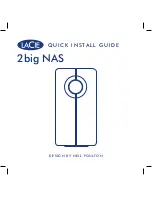
RouterBOARD 1100 series
The RB1100 is a rack-mountable ethernet router with 13 Gigabit Ethernet ports. Two of the ports provide bypass
functionality.
Powering
The device accepts powering from the dual/failover IEC power connectors on the back of the case. You can use ei-
ther of them separately or both connectors at the same time, for failover purposes. The device also accepts 12-57V
passive or 802.3af/at PoE on Ethernet port 13. The device also has a terminal block for Telecom -48V DC supply or
any other DC supply in 24-57V range.
Booting process
First, RouterBOOT loader is started. It displays boot information on the onboard RS232C asynchronous serial port.
The serial port is set by default to 115200bit/s, 8 data bits, 1 stop bit, no parity.
The
RouterOS
system will then load. It will be also indicated by two beeps.
You can connect to the device with SSH, Winbox GUI or the web interface, by plugging your computer into port
Ether1, and connecting to 192.168.88.1. The device doesn’t have DHCP server enabled by default, your PC should
be configured with an address from this network.
More information on connecting to the device:
http://mt.lv/help
Extension slots and ports
•
13 Gigabit Ethernet ports, supporting automatic cross/straight cable correction (Auto MDI/X), so you can use
either straight or cross-over cables for connecting to other network devices. ETH13 port accepts PoE power,
and can be used to boot the device from network for reinstalling with the Netinstall utility (see documentation)
•
DB9 RS232C asynchronous serial port
•
microSD slot
•
2x M.2 slots, accepting SATA type M.2 SSD disks in 2280 form factor (only Dx4 model)
•
2x 2.5 inch SATA connectors, accepting standard 2.5” SATA HDD disks (only Dx4 model)
Buttons and jumpers
The
reset button
has the following two functions:
• Hold during boot time until USR LED light starts flashing, release the button to reset RouterOS
(total 5 seconds)
• Keep holding the button until USR LED turns off, then release it to make the RouterBOARD look for Netinstall
servers on port 13 (total 15 seconds)
If you start holding the Reset button before applying power, it will also load the backup RouterBOOT loader, in addi-
tion to the above actions. This may help to solve RouterBOOT issues and give you the opportunity to downgrade/
upgrade it while in backup loader mode.
The
bypass switch
allows to bind ports 11 and 12 together in bypass mode, which means that if the device loses
power, the ports will be connected together, allowing data pass from one port to the other, as if the device would not
be there.
Operating system support
Currently tested operating system is MikroTik RouterOS (starting from version v6.38).
See www.routerboard.com for more information. Contact [email protected]
22/02/2017




















